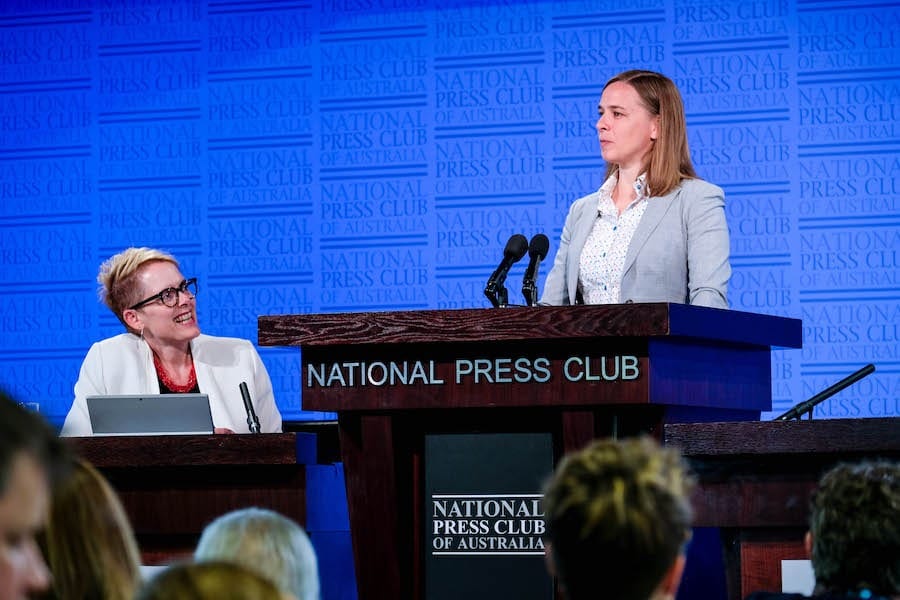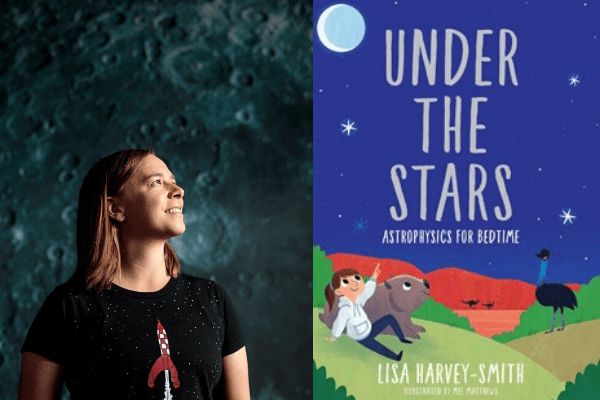Gender stereotyping starts early. For example, parents of two-year-olds talk about numbers to little boys three times more than they do to their girls.
“Furthermore, STEM role models in books and in television are highly gendered,” she says. It’s no accident that my children’s book: Under the Stars: Astrophysics for Bedtime, has a girl on the cover.” Professor Harvey-Smith told Women’s Agenda.
Lockdown due to COVID-19 is a reality for the vast majority of Australian families. Rather than focus on the negative, Professor Harvey-smith says now is a “fantastic time to have those conversations and learning experiences with your child”.
“In particular, use this time to help encourage your child’s love of learning. Help them to build a curiosity about the world and model a growth mindset,” Professor Harvey-Smith says. “When you don’t know the answer, don’t let them sweep it away as ‘too hard’. Encourage patience, perseverance and confidence. These are skills for life.”
https://www.instagram.com/p/B8QwNJjA0vh/
Participation for young girls in STEM remains low in relation to boys. Why is this the case?
Whether we realise it or not, our society has strong views on gender roles. Boys and girls are often dressed differently, bought different toys; praised or scolded for different behaviours. Girls are commonly given unicorns, princesses and dolls, boys are more likely to be encouraged to play with dinosaurs, trucks and robots. This leads to boys on average spending more time practicing vital
problem-solving and thinking skills and interacting with technology.
Furthermore, STEM role models in books and on television are highly gendered. Engineering and physical sciences, in particular, are portrayed as male domains and are often viewed as solitary pursuits. The divergent outcomes we see are a result of these interacting elements of social conditioning that we all maintain, often without even realising that we are doing it.
How can we engage with girls better around STEM from a young age?
We need to be conscious of any ‘filters’ that we use when we speak to girls. Researchers found that parents of two-year-olds talk about numbers – for example – “how many flowers can you see?” – three times more often with boys than they do with girls. When we are aware of these biases, we can make sure that we don’t cultivate them. What we read to children also has an impact.
When the market research company Nielsen analysed the 100 most popular children’s books of 2017, they found most to be dominated by male characters, who were twice as likely to have speaking roles than female characters and had far more lines when they did speak. By exposing children to these stereotypes, we are teaching children that it is normal for men to dominate discourse in society. It’s no accident that my children’s book Under the Stars: Astrophysics for Bedtime has a girl on the cover.
Parents face the prospect of a lengthy time at home with their children during the COVID-19 pandemic. Is there an opportunity to engage in a meaningful way around STEM?
It’s a fantastic time to have those conversations and learning experiences with children. In particular, use this time to help encourage your child’s love of learning. Help them to build a curiosity about the world and model a growth mindset. When you don’t know the answer, don’t let them sweep it away as ‘too hard’.
Encourage patience, perseverance and confidence. These are skills for life.
Where can we start, as parents? Can you give us some tips?
I know that many parents will be under the pump. Learning facts is not important at this time, but developing skills and positive attitudes to STEM is. Every day, aim to have one meaningful conversation with your child about how technology is used in the world, or why the sky is blue, or simply look up at the stars from their bedroom window before bed. Plus, good quality books that stretch their minds are the best babysitters!
Talking to kids about COVID-19 can be confronting. Have you come across any good, factually correct resources on this?
I’ve seen a really great video explainer for kids (and adults too!) about the Coronavirus and why it is so important to wash your hands. You can find it
here.
You have been working on some resources around the pandemic and educating kids. Can you tell us about that?
I know that parents with young children will be particularly stretched at this time, so to fill the void during the Easter period I’ve made available some free space-themed colouring sheets on my website. These were generously produced by Mel Matthews, who illustrated Under the Stars: Astrophysics for Bedtime.
My team and I are working on some live-streamed STEM events in the coming weeks. We’re partnering with Questacon to deliver a virtual workshop for educators and a science story time later in the year for children and their parents and carers. We’re also preparing virtual interactive STEM
shows where I’ll be talking about astronomy and showing kids and parents activities that they can follow along with at home, like exploring the night sky.
Keep an eye on the @WomenInSTEMau Twitter account or the ‘Australia’s Women in STEM Ambassador’ Facebook page for details.
You have written a children’s book. Tell us about that and where it came from.
I wrote Under the Stars: Astrophysics for Bedtime to encourage children to explore our universe from the comfort of their cozy bedrooms. The book has more than 40 short factual bedtime stories, beautifully illustrated by Mel Matthews, that take children on a journey through the stars and planets. The book answers questions from ‘what’s a shooting star?’ and ‘why does Jupiter have stripes?’ to ‘what happens when you fall into a black hole?’ Mel, the illustrator and I were keen to represent children with a broad range of genders and backgrounds in the book, so that children around the world can read the book and see someone like them exploring our universe.
What do you hope your book will achieve?
My aim is that all children are excited and fascinated by the natural world. That they grow confidence in exploring their potential. That girls come to see that they belong in STEM, and it belongs to them. Women need to know that science, technology, engineering and mathematics are important tools with which they can design a better future for our world – a world where women lead equally in the creation of solutions to the massive health, equity and environmental challenges the world is currently facing.



